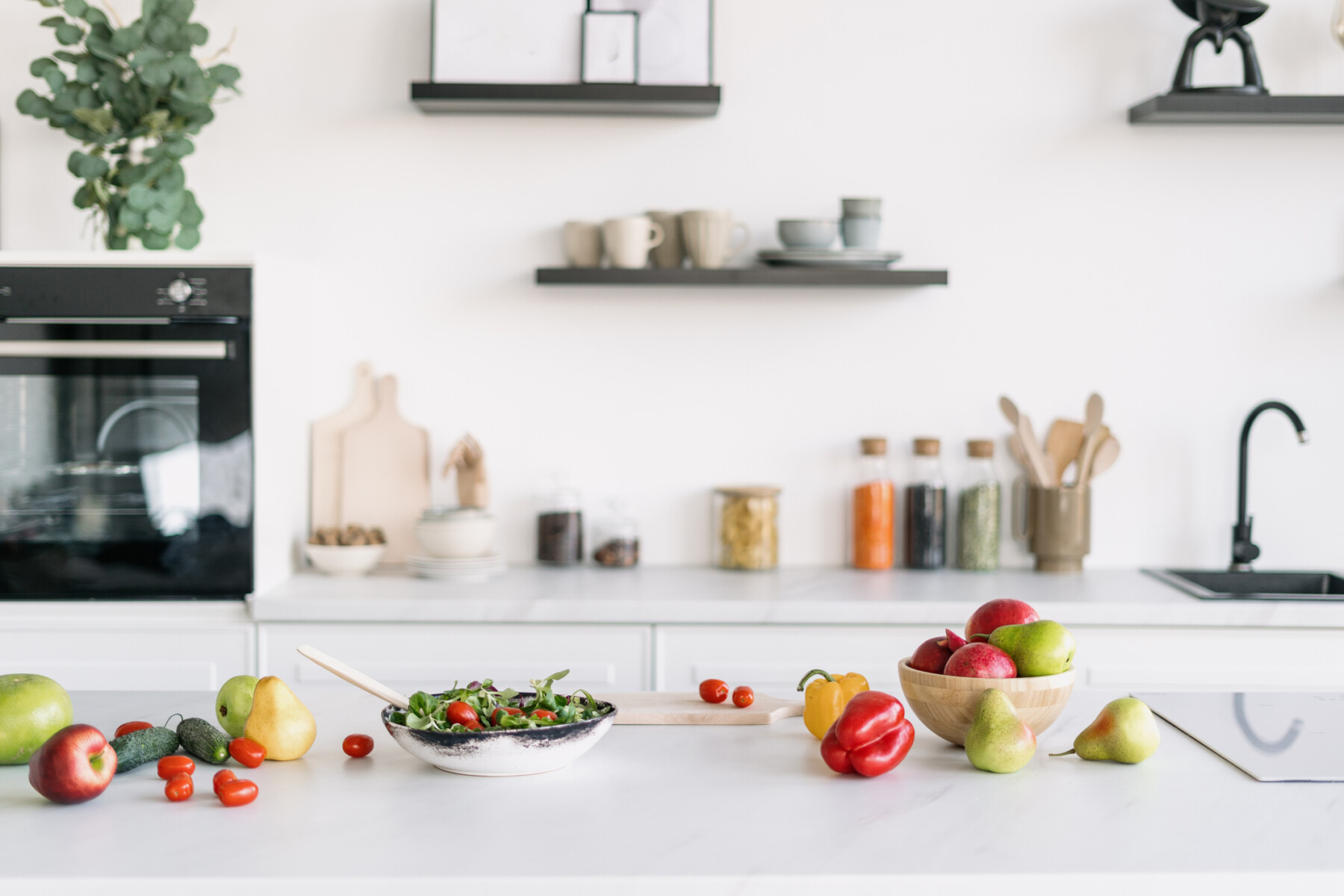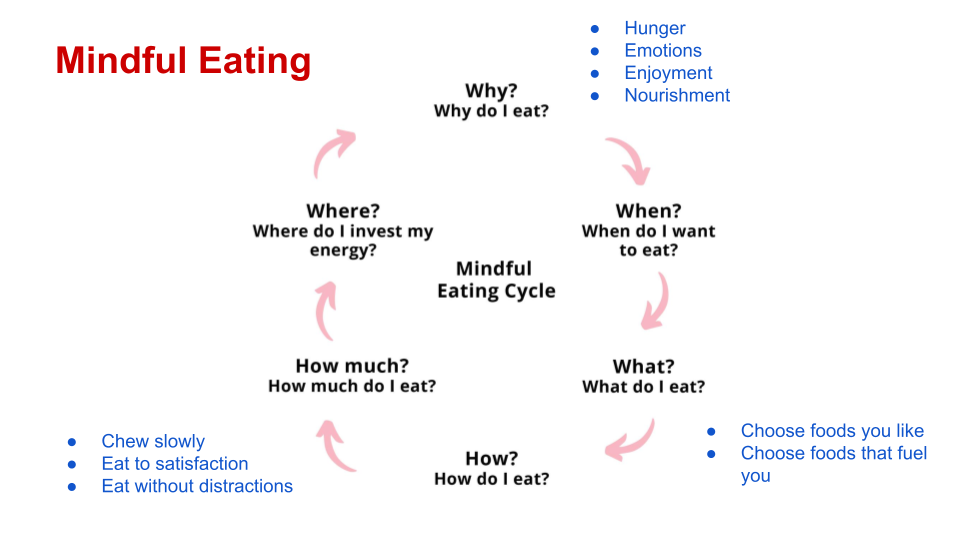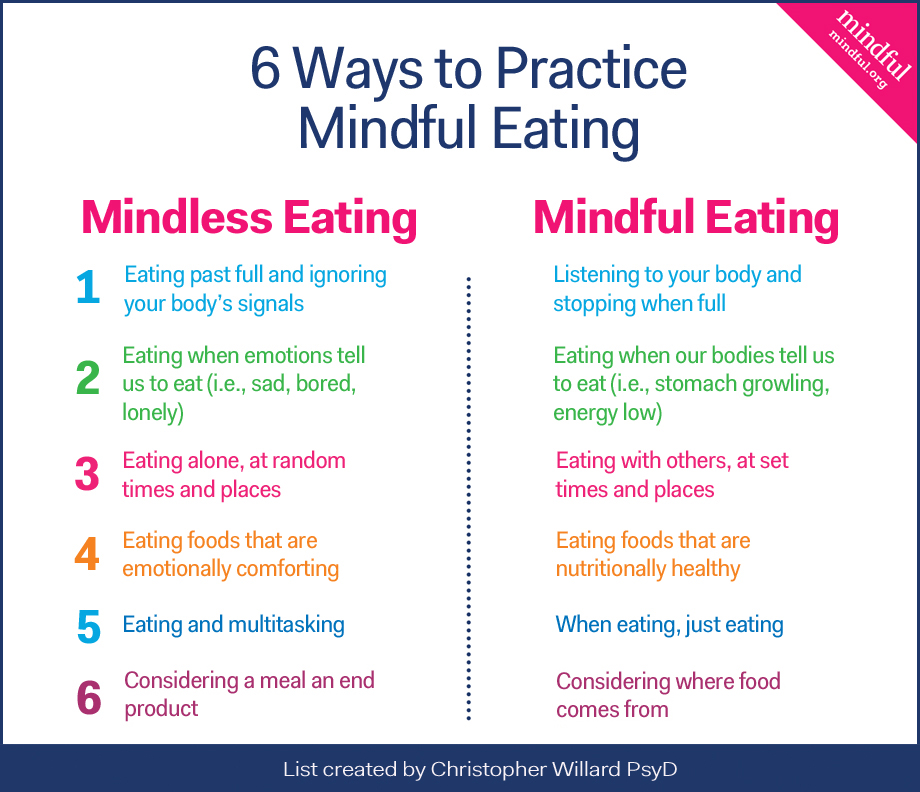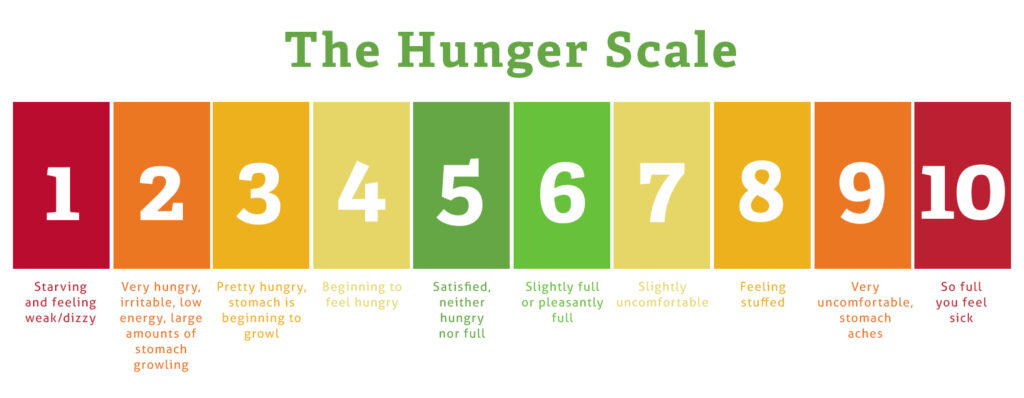By: Maude Morin, Registered Dietitian, BSN, MAN, Reviewed and Edited by JM Nutrition dietitians and nutritionists
In this post:
- What is a food environment?
- The importance of a healthy food environment
- How to create a healthy food environment at home
- Taking the healthy food environment on the road
Learning how to create a healthy food environment is incredibly important. After all, it forms the foundation of healthy eating habits, effectively promoting overall good health. For this reason we feel it’s imperative that we explore in some depth ways in which we can create a healthy food environment at home and elsewhere.
Before we take a closer look at some specific strategies to do so, let’s first define the term food environment.
What is a Food Environment?
According to the European Public Health Alliance, “Food environments are the physical, economic, political and socio-cultural contexts in which people engage with the food system to make their decisions about acquiring, preparing and consuming food.”
Related: Factors That Affect Food Choices
For the purposes of this post and within the scope of our practice, we will focus on what you can do to help create a healthy food environment at home and beyond.
The Importance of Healthy Food Environments
A healthy food environment is important because it can help exert a great deal of influence without a conscious effort on your part. It’s the old adage of “You Are Where You Live” at play. That is, where you spend your life influences your choices. In this case, food choices.
A healthy food environment can effectively lead to the consumption of more wholesome, unprocessed, nutrient-rich foods, supporting your overall health and wellness goals.
How to Create a Healthy Food Environment?
A healthy food environment starts with you and your mindset. We cannot emphasize this enough.
Mindset Matters
Use every opportunity you can to assess and cultivate a healthier relationship with food. It’s important to keep in mind that your mindset shapes behaviours and food choices. It also helps to prioritize satisfaction and enjoyment through nourishment. In addition, it can help avoid moral language and labels such as good food vs. bad food.
How to cultivate a positive nourishment mindset
Simply put, a balanced outlook on food is best for long-term health and well-being.
How do you achieve that?
Adopt mindful eating practices.
That is, reflect on your “want” vs. your “should” food behaviours. Pay attention to negative language about food. Do your best to avoid restrictive food rules. (Do you have any conscious or unconscious food rules that affect your food choices?)
Mindful Eating
What is mindful eating?
We’ll let the infographic do the talking.
Infographic based on todaysdietitian.com
How do you go from mindless eating to mindful eating?
Again, the infographic below illustrates some key points of mindless eating vs. mindful eating.
Infographic by Commwellhealth.org
Related: dietitian for mindful eating
Reduce Distractions
Most of us regularly face various distractions throughout our lives. These distractions have an enormous impact on our food choices, and thus, our food environment. For this reason it’s important to minimize them as best we can.
Here’s how you can do that, according to our Victoria nutritionist and dietitian, Shirley:
- Eat in the kitchen or dining room only.
- Avoid use of electronic devices at meals.
- Try having designated meal times with the family.
Related: Focused Eating in a World of Distraction
Respect Hunger and Fullness Cues
Another strategy aimed at helping to develop a healthy food environment centres around hunger and fullness. Specifically, it calls for gauging hunger. To do so you can refer to the hunger scale below. The goal is to stay somewhere in the middle of the scale–ideally, in the green zone.
Infographic by ohiohealth.com
How full do you have to be, to be considered “comfortably full”? Approximately 70%.
Related: Causes of food cravings and how to stop them
Reduce Resistance to Healthy Eating
Another effective strategy to help create a healthy food environment revolves around obstacles that get in the way of making positive choices. For this reason it’s important to reflect on your personal barriers to making healthful choices.
Are time constraints getting in the way?
Ways to overcome time constraints.
- Prioritize meal planning and meal prep.
- Reduce decision fatigue during the week.
- Ask for support from family members.
Related: Is meal timing important?
These are only a handful of ideas. There are many more.
Are cooking skills proving to be the obstacle?
To combat this challenge, you can do the following:
- Make simple, quick meals with few ingredients.
- Watch video tutorials.
- Cook with a friend or family member who is seasoned in the kitchen.
- Follow recipe directions carefully.
- Seek the help of a meal planning service.
Again, these are just several examples.
Are you unsure about what to eat?
Seek the help of nutrition professionals such as our nutritionists in Montreal or a nutrition coach.
Are certain health conditions a factor?
Seek the help of health professionals who can help provide solutions.
Foster a Healthy Food Environment at Home
To foster a healthy eating environment at home it’s important to model positive behaviour for others in the household to see. Reason being, other family members may mirror positive eating habits and behaviours, especially if exposed to them consistently. This especially applies to children.
You can also engage family members in meal planning and preparation of food to strengthen a healthy food environment.
In addition, it’s wise to prioritize meals as a family at the dinner table.
Promote Healthy Choices
You can go a step further in establishing a healthy food environment in your household. One way of doing so is to design or arrange the kitchen to support positive outcomes, emphasized North York registered dietitian, Natalie.
Organize
Keep nutritious food in stock, in plain sight and within easy access in the cupboards, pantry, fridge, freezer and on the kitchen counter. An orderly kitchen may create instant gratification of calm and peace.
Decide
Make a list of items that…
- can be purged,
- can be reduced in amount or quantity,
- can be placed out of sight (and out of mind)
These decisions may be challenging, but are indispensable in creating a healthy food environment.
Prep
Pre-prep some nutritious, wholesome foods, so they’re always available and accessible. In particular, wash and cut produce items and place a designated bowl or container on display.
Related: How to eat more vegetables
At the same time, avoid keeping sweets or processed foods on display to help solidify those healthy food choices.
Find Substitutions
Take the time to research nutritious substitutions for some of your favourite foods and/or recipes, suggest Carlyne, our registered dietitian in Milton.
For example, try using stevia or monk fruit in your coffee or baked goods.
Organize Your Kitchen’s Functionality
Meal prepping is a real asset when it comes to helping instil a healthy food environment. And, it is no doubt much easier to meal prep in an organized and functional kitchen.
Of course, sometimes we are limited with our possibilities because of existing kitchen layouts. Nevertheless, it is still possible to organize the kitchen in most cases.
Diagram
We borrow this “Zone” concept from commercial kitchen design, which aims to be highly productive.
Additional Tips to Help Create a Healthy Food Environment
- Declutter and reorganize.
- Reduce decision making by eliminating duplicates or appliances that are not used.
- Don’t shy away from labeling, recommend our Windsor dietitians. This applies to prepared foods, so everyone in the household easily knows what food is in what container. This also applies to storage locations, so items easily find their way home. Masking tape and a marker work exceptionally well and are often used in commercial settings.
- Invest in quality tools, slowly, over time. Easy to use and wash tools and appliances make cooking a breeze. Opt for a dishwasher safe alternative if you have or use one, so family members can help with greater ease. Matching sets are easier to stack and store as well.
Practice Your Best Meal Planning Routine
Practicing meal planning routines can help entrench a healthful food environment. Doing so sets the intention for healthful eating each week.
So how can you do that?
Here are some ideas suggested by our team of Edmonton dietitians and nutritionists:
- Make your resources (e.g. recipes) easy to access.
- Display the plan for the family.
- Meal prep as appropriate.
- Keep a consistent meal schedule.
Make Meals That Present Well and Are Appealing to the Senses
Presentation of meals can also help promote a healthy food environment. Food presentation is the key to pulling all 5 senses into the experience of eating. For this reason it’s important to make healthy, nutritious food that appeals to the senses. Doing so helps you to focus on satisfaction and enjoyment. And, when you enjoy the food you’re eating, you’re likely to stick to the healthful eating habit.
Assess Areas for Improvement in Your Healthy Food Environment
Let’s not forget the significant role that reflection plays in creating a healthy food environment. This is why we always recommend clients to assess areas for improvement.
If something doesn’t work, simply tweak or change altogether, suggests our dietitian in Surrey, Shirley. That said, it’s important to keep in mind that everything is fluid and a work in progress.
For example, if you feel that your cooking skills are not up to par or leave a little to be desired, consider a cooking class to learn new skills.
Taking Your Mindset and Healthful Food Environment on the Road
Naturally, some significant challenges around healthful eating arise in social situations outside of home. For this reason it’s vital to ensure that you’re equipped with strategies that can help overcome outside-of-the-home obstacles. This is the only way to find sustained success.
Hydration
Carry a water bottle with you everywhere to avoid nutrient-devoid drinks such as soda. Drinking water is important for a number of reasons, not the least of which is regulation of hunger.
Related: Why is drinking water important?
Pack Nutritious Snacks
Be prepared for when hunger strikes by packing snacks such as nuts, snack bar or fruit, and taking them with you to work, gym or to run errands, suggest our sports dietitians.
Keep Snacks Handy at All Times
Again, to help instil a healthful food environment, it’s important to be prepared.
Ensure that you have nutritious food and/or snacks with you at all times, including at home, in the briefcase, backpack, purse, gym bag, car, office desk and so on.
Make Use of Mobile Apps
Making a conscious and sustained effort to maximize the chances of making the best decisions to help establish a healthy food environment is critical.
One way of doing so outside the home is by accessing available technology. Many restaurants will have apps you can download where you can consult nutrition information for various foods and drinks. This will no doubt help you navigate things, when eating out.
When Eating Out
Eating out certainly has its challenges. Reason being, when we eat out, the environment is designed for us.
So how can you make the best choices to ensure healthy eating habits?
Start by choosing places that offer a variety of balanced choices.
- Limit frequency of meals eaten out.
- Order “extras” on the side, if you can.
- Boldly customize your order.
Related: How to eat healthy and well while on the go
When at Social Events
- Reduce portion size and servings of desserts.
- Don’t socialize near the food table.
- Eat mindfully.
- Focus on quality time over food!
Reinforce Your Mindset Muscle: Language Matters
People naturally talk about food as “good” or “bad” in social settings. Take on the challenge of using other words.
Examples: Fresh, refreshing, flavourful, nutritious, creamy, brightly coloured, satisfying, crispy.
A Healthy Food Environment Includes the Building of a Healthy Work Environment
Make and pack your own lunch for work, recommend our Kelowna dietitians. We alluded to this before and we feel compelled to reiterate the point here. Doing so is a great opportunity to prioritize your nutrition.
It also acts as a chance to pack and bring something fun, so you are less likely to seek out treats later in the day. For example, pack a small dessert or a piece of chocolate.
Avoid Relying on Fast Food, Vending Machines, Convenience Stores and the Like
Doing so can help solidify positive, healthful habits and a a healthy food environment. What’s more, it can save a great deal of money.
Related: How to Save Money on Groceries
Interestingly, it’s estimated that people who buy lunch spend on average $5 more per meal. This can quickly add up to a great deal of unnecessary money spent in the work year. And, this figure does not include any coffee shop runs either.
Flip Side: Advocate for the Healthy Choice Being the Easy Choice
If work provides meals or snacks, is there a healthier option? You should also stock your own office or fridge with balanced choices, perhaps single serving foods.
Examples of single serving goods to try:
- Fruit like bananas, apples, oranges
- Small packets of trail mix
- Individually wrapped jerky
- Packets of roasted beans or lentils
- Single-serve high fibre crackers
- Cold: yogurts, cheese strings, hummus, guacamole, etc.
Advocate for or Provide Awareness and Education
Promote awareness and education at work because it may help build a “Team” mindset and a supportive attitude toward making greater changes together. This way everyone is on board with changing the status quo to better reflect choosing nourishment, underscores our Winnipeg dietitian, Nadja.
Offer or Share Resources for Healthy Eating, Internally
To help foster a healthful food environment, share resources with your co-workers. These can include: recipes, courses, webinars, videos, blog posts, and apps. You can also create and take part in various office challenges and incentives.
Use Visual Cues to Promote Healthy Behaviours
Visual cues are also helpful in promoting a healthy food environment. Examples of visual cues you can use: nutritious food posters or nutrition information on restaurant menus.
Lunch “Success” Buddies
Furthermore, pair up with someone who is as motivated as you are to follow healthy eating habits, or those are already choosing the lifestyle you wish to build. Enjoy a distraction free lunch together! Studies show that having an accountability partner can increase your chance of success by 95%. This is a strategy that many of our weight loss nutritionists use with their clients who find a great deal of success meeting their individualized goals.
Conclusion
In the end, creating a healthful food environment takes a conscious effort and commitment, but it is no doubt achievable. Give it a try and you’ll soon discover that the benefits are many and varied!
For a personalized nutritional counselling for metabolism and nutrition matters with an on-site or online dietitian, book a free consultation or contact us for an appointment.
Other Popular Posts:
Nutrition and Stress Management
Why Work with a Weight Loss Coach
How to Beat the Afternoon Slump
About Author
Maude Morin is a dietitian in Saint John. She is a dietitian for women’s health, hormonal support, dietary management of PCOS, digestive health, fertility nutrition and more. Maude has appeared in a variety of publications including Reader’s Digest, Best Health Magazine, Toronto Star, Globe and Mail and many more.
Our nutrition blog has been named one of the Top 100 Nutrition Blogs, Websites and Newsletters to Follow in 2021-2024 and one of the Top Canadian Nutrition Blogs by Feedspot. So don’t miss out and subscribe below to both the newsletter that includes latest blog posts.
JM Nutrition is a nutritional counselling service by dietitians and nutritionists in Canada. Main area of service: dietitian Ontario, main office: dietitian and nutritionist Toronto.




